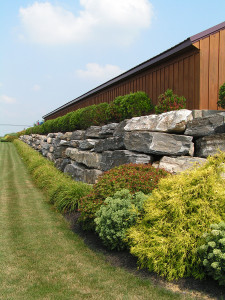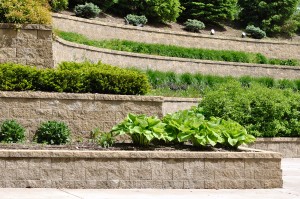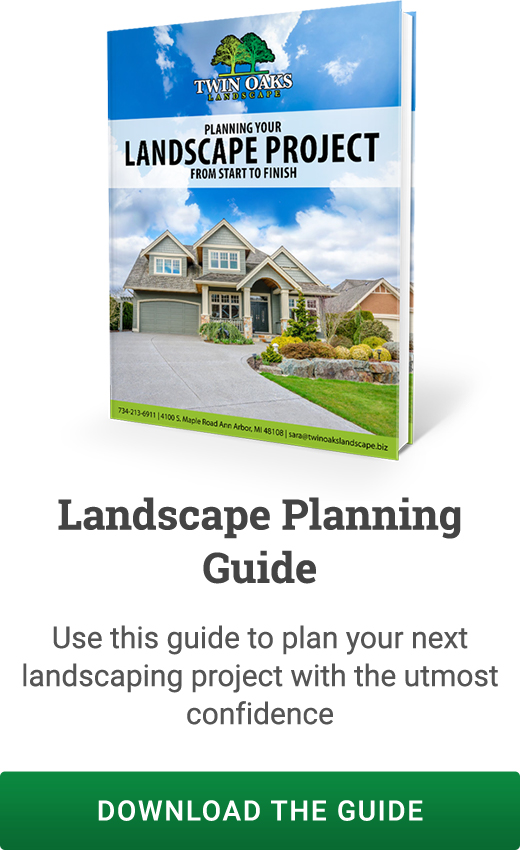March 27, 2017
 Properly landscaping your Ann Arbor Michigan home can significantly improve its curbside appeal and overall value. In fact, the right landscaping designs can also play a major role in preventing soil erosion, water damage at the building foundation, and many other costly issues. If your outdoor areas are flood-prone, erosion-prone or simply in need of better organization, a retaining wall could be the best functional and aesthetic addition to consider.
Properly landscaping your Ann Arbor Michigan home can significantly improve its curbside appeal and overall value. In fact, the right landscaping designs can also play a major role in preventing soil erosion, water damage at the building foundation, and many other costly issues. If your outdoor areas are flood-prone, erosion-prone or simply in need of better organization, a retaining wall could be the best functional and aesthetic addition to consider.
How These Walls Can Improve Your Ann Arbor Michigan Property
Retaining walls serve the functional purpose of holding back ground and ground materials that are naturally predisposed to moving downwards, whether due to their positioning, slope or lose nature. In a sense, these structures can be considered as being man-made dams for the solid runoff. With the right design, it’s possible to stabilize landscapes that are both sloped and subjected to an inordinate amount of water.
Create Different Elevations
In terms of overall yard aesthetics, these structures are also good for creating different elevations. This design strategy gives the space greater depth and visual appeal. This can be especially beneficial to the overall landscaping scheme when building upon a flat, empty landscape with little variation in texture and features.
Different Options In Wall Materials
When adding one of these structures to your Ann Arbor Michigan property, it’s important to learn more about the different materials options that exist, as well as the benefits and drawbacks of each. Given the diverse range of applications for these walls, it’s also vital to select materials that are optimally suited to your purpose. A wall that is built solely for the purpose of preventing erosion or run-off will likely need to be comprised of different materials than one that is primarily intended to enhance overall outdoor aesthetics. Among the most popular options are:
- Wood
- Mortared/Cast-In-Place Designs
- Segmental Walls
Wood
Wood is among one of the cheapest options available and it can be used to construct attractive structures that blend seamlessly with all other landscaping features. One thing to note, however, is that wood has a notably short lifespan in this application. As the wood in these walls begins to decompose, the integrity of both the structure and the usable outdoor space will gradually decrease.
Mortared Or Cast-In-Place Designs
Mortared or cast-in-place walls are incredibly attractive and very popular. These are offered in a vast range of veneers, including bricks and flagstones among many others. If you want to enhance the style and texture of your outdoor areas, this is definitely the way to do it. Cast-in-place designs are far more durable than wood and can be used in multiple applications.
 Segmental Walls
Segmental Walls
Segmental walls provide a similar level of durability, but they can be less costly to build and far easier to maintain. These have an interlocking design that’s sufficiently flexible for repairing grading and sloping issues. Walls like these use similar construction techniques to those used in the Pyramids of Giza and the Great Wall of China. As such, they’re virtually guaranteed to last.
Establish Your Landscaping Design Goals
Before attempting to add an element as permanent as a new retaining wall, be sure to determine just how you want to allocate your outdoor space. Temporary and semi-permanent design elements can always be removed or moved around to accommodate changes in your outdoor entertaining habits or other outdoor uses and features. Working with a trusted landscape design company is always the best way to get a solid, seamless landscaping plan that will both protect your property and enhance its value. If you are looking to add a retaining wall to your property, contact Twin Oaks Landscape for a consultation today!
Gallery
“We recommend Twin Oaks to any entity looking for a full-service, talented, and responsive provider.”


